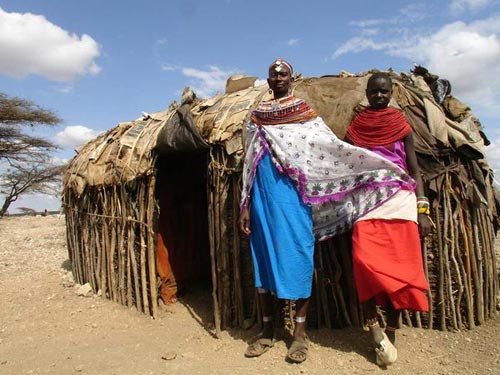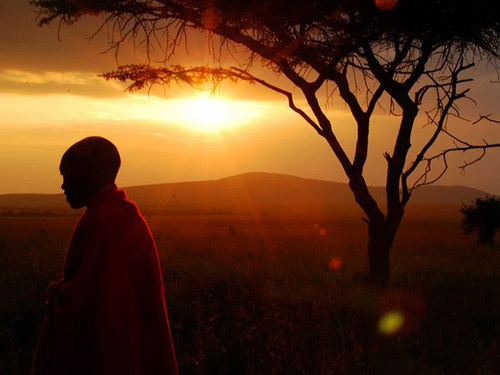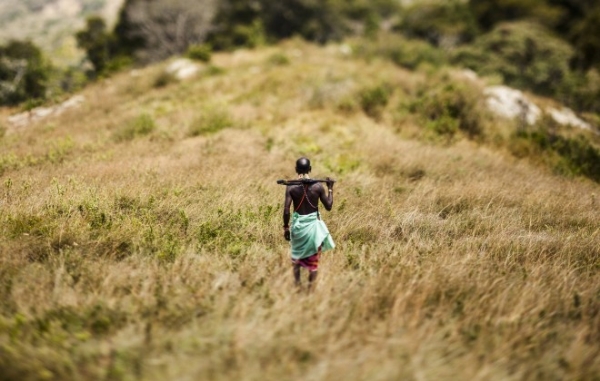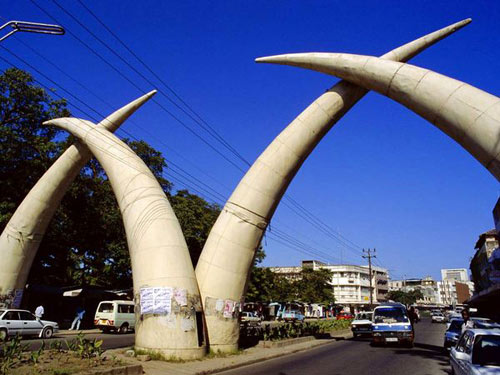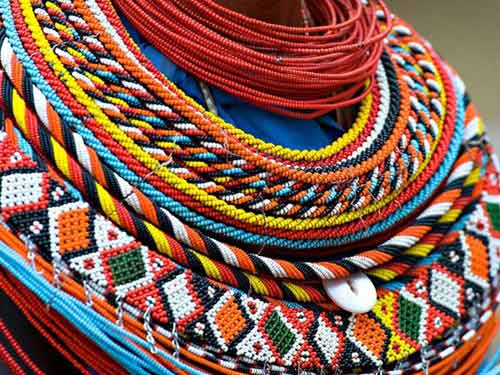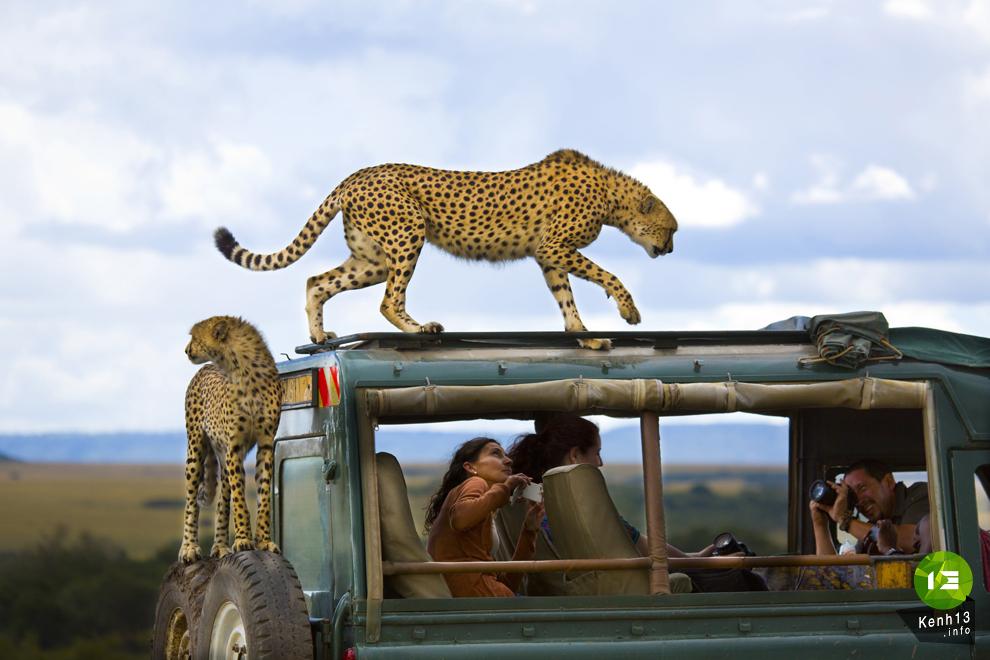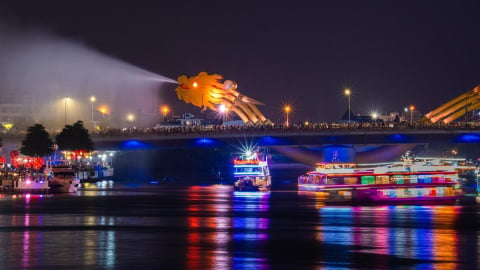A Maasai woman prepares to collect cow blood - Photo: Tran Truong
Life in the early days
Beyond imagination, when we traveled from Kenya's capital Nairobi to the southern border with Tanzania, we visited a primitive village of the Maasai tribe.
The village is called Kasoe in Narok County. The entire village has 87 people but all are blood relatives of village chief Kasoe and his son Soyianjet. Welcoming us, dressed in the colorful traditional red Maasai costume, Soyianjet said that his father passed away a few years ago, leaving behind 7 wives and 42 children, of which he is the son of the first wife, so now he naturally becomes the village chief. He himself currently has only... 2 wives and 5 children.
It is called a village and has a proper name, but all the roads,The houses are all made of cow dung, only the village "gate" and the village "citadel" are made of dry tree branches piled up to half the height of an adult, which, according to Soyianjet, is to avoid wild animals attacking at night because just standing from this village, one can see herds of animals with nMany species are running around.
We entered the village gate when the sun was already setting in the west, all the smells of cow dung and animal skins seemed to rush straight into our noses. The children with drooling noses, flies covering their faces and hair, cried and ran away when I raised my camera and beckoned to take a picture with them. Finally, there was something to “entice” the children, like all the children in this world: candy. Those hands were so small, those bodies so small in the vastness of Africa, why did I feel a little moved in my heart…
The throne isI haveThe village has a circumference of about 500m and has about 40 houses. They are called houses but they actually look like large matchboxes that are roofed and plastered with cow dung. According to Soyainjet, they are rainproof, sunproof and protect against the cold in winter. All the houses and even the raising of livestock (mainly cows, sheep and goats) are managed by Maasai women.
SoyianjeHe led me into his house. I squeezed through the narrow bars of the door. I had to close my eyes for a long time before I could open them, but I still couldn't see anything. It turned out that there were two small light holes, the size of beer corks, that Soyianjet hadn't had time to open. These two tiny holes would be opened to let in light during the day and closed at night to prevent mosquitoes from flying in.
Pieces of cowhide, sheepskin, goatskin were put together to make blankets, quilts, beds. A fire and rudimentary tools like in prehistoric times. At this point, I was even more surprised that this village still did not use fire from matches, but still used a piece of iron, a tree and tinder from tree bark to make fire. I crushed the whole tree and my two hands were red without any fire, until a young man of the village only needed 2 minutes to "light" a bright blue fire!
Blood for drink
Another surprise is that most of the people in this village only eat meat and drink animal blood mixed with cow's milk, and do not consume any cereals. Beef, goat and sheep are their main daily food, but they usually drink the blood of these animals at least 3 times a week.
And don’t think they will kill cows, goats, or sheep to get their blood to drink. A method that only the Maasai can think of is to use a sharp object to cut the cow’s body or neck to get the blood, then use the animal’s own feces to cover the wound to heal it. “This blood, when mixed with milk, will fill the stomach for several days and make the person very healthy,” Soyianjet said.
The conversation with Soyianjet had not ended when the rain suddenly came, so we quickly left the village because we could not find enough shelter from the rain, and under our feet were layers of cow dung that were about to melt because of the rain.
When we got on the bus, Soyianjet and a few young men from the village ran after us and said that he really wanted to "treat" the group of tourists from Vietnam to a... meal.u bo if we have time. ...We promise we will be back.
The next morning, Mr. Tran Van Truong, General Director of VYC Travel, and I decided to return to Kasoe village to see how they “ask for a little blood” from cows. It was so simple: they used a small, sharp knife, patted the cow’s head with one hand, and quickly cut the cow’s body with the other hand, and blood flowed out in a stream. They used wooden bowls to catch the blood, then poured milk into it, and drank it deliciously. It was extremely embarrassing when both of us had to refuse.regretmy crime of cowardice
It is hard for us to imagine, but perhaps that is the happiness of those people. Or as Soyianjet said: “We do not want to live differently than what our ancestors lived!”.
(to be continued)Cao Minh Hien from Kenya





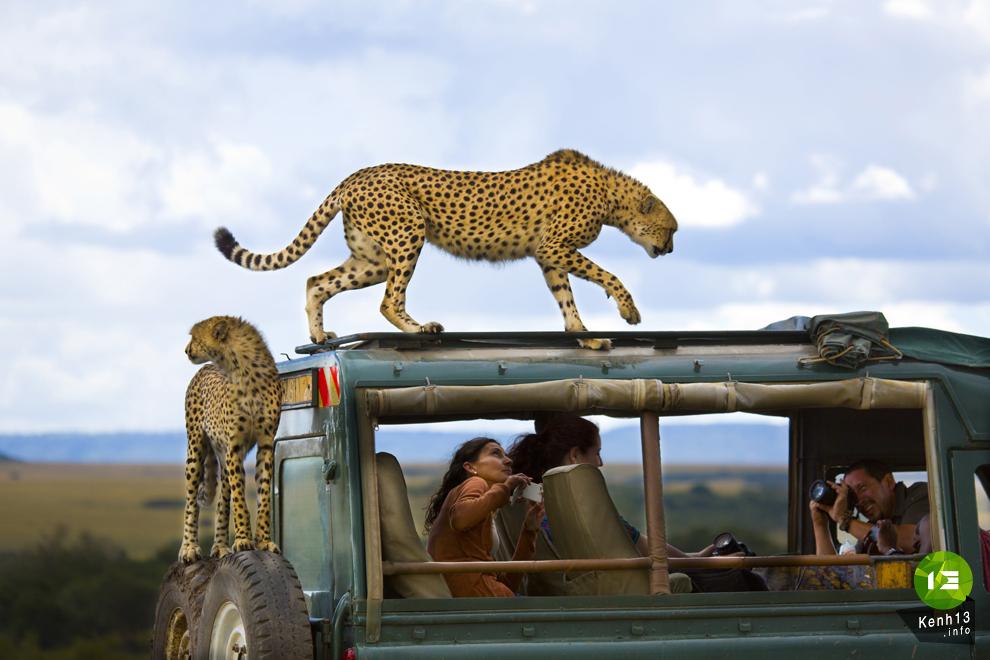
.jpg_0.jpg)

